xxx
[draft]
Delhi — A ‘third gender‘ has been acknowledged within Hinduism since Vedic times. Several Hindu texts, such as Manu Smriti and Sushruta Samhita, assert that some people are born with either mixed male and female natures, or sexually neuter, masseurs and prostitutes.

Today, many people of a ‘third gender‘ (“Hijiras“) live throughout India, mostly on the margins of society; and many still work in prostitution, or make a livelihood as beggars.
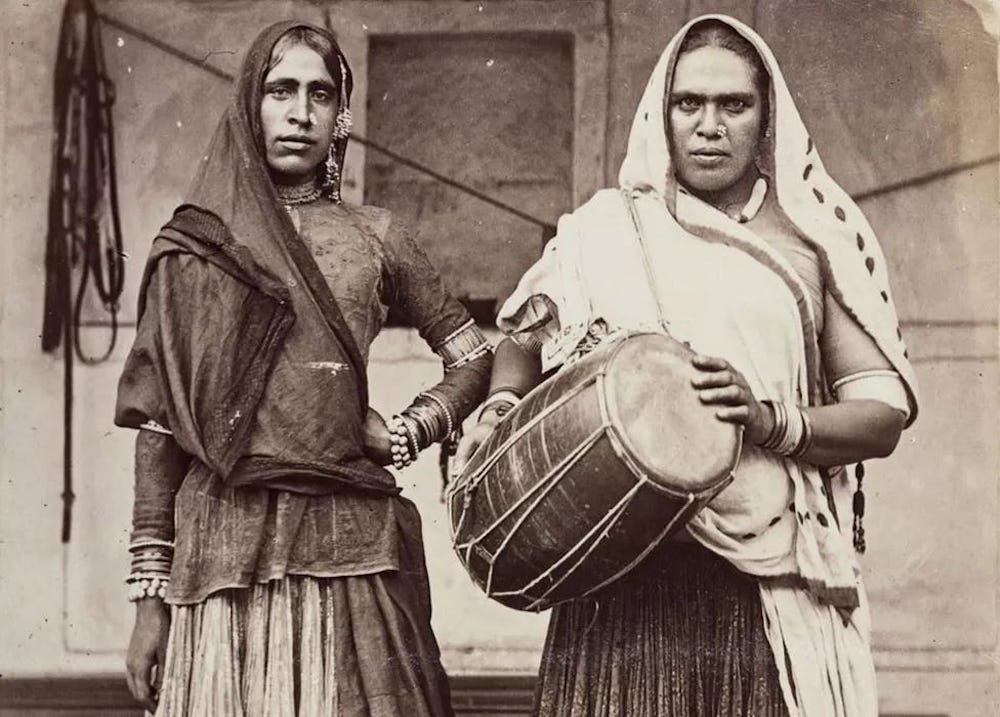
The Indian Kama Sutra, written in the 4th century A.D., contains passages describing eunuchs or “third-sex” males performing oral sex on men. However, the author was “not a fan of homosexual activities” and treated such individuals with disdain, according to historian Devdutt Pattanaik.

Similarly, some medieval Hindu temples and artifacts openly depict both male homosexuality and lesbianism within their carvings, such as the temple walls at Khajuraho. Some infer from these images that Hindu society and religion were previously more open to variations in human sexuality than they are at present, likely as a reflection of the homophobic British occupation.
In some Hindu sects, many divinities are androgynous. There are Hindu deities who are intersex (both male and female); who manifest in all three genders; who switch from male to female or from female to male; male deities with female moods and female deities with male moods; deities who avoid the opposite sex; deities with principal comoanions of the same sex; and so on.
However, this is not accepted by the majority of Hindus, and is often, considered heretical in nature. Those who do accept it justify with the belief that both God and nature are unlimited diverse and God is difficult comprehend.
Painting: Final Assault Upon Fort Fisher, North Carolina, 1873. Credit: Xanthus Russell Smith (1838-1929).
[draft]
New York, N.Y. xxx
This scene, one of some dozen very well received battle subjects he painted, depicts an encounter at sea near Cape Fear, North Carolina, which culminated in the fall of the fort to the Union forces in 1865. In addition, it stands as a graphic symbol of the technological changes occurring in America at this time. In this complex panoramic work, the sail-powered ships at the right are assisted by the newer ironclad seen at the center. Xanthus Smith was well qualified to paint “Final Assault upon Fort Fisher,” having served in the Union Navy during the Civil War.
Painting of the death of Joseph Warren at the Battle of Bunker Hill by John Trumbull. Image Source: Wikipedia.
Boston, Massachusetts. We reflect on the Siege of Boston as a defining moment in our nation’s history, one that laid the groundwork for the principles of resilience, leadership, and collective action that we hold dear today. The siege, spanning from April 19, 1775, to March 17, 1776, was not merely a military engagement; it was the crucible in which the resolve and ingenuity of the fledgling American spirit were tested and proven.
The Siege of Boston showcased the strategic brilliance of leaders like George Washington, the innovative spirit of individuals like Henry Knox, and the tactical mastery of Nathaniel Greene. These figures were not just military leaders; they were thought leaders and global citizens whose actions resonated far beyond the battlefield, shaping the very fabric of our nascent nation.
George Washington’s leadership during the Siege of Boston set a precedent for what it means to be a true leader and a global citizen. As the newly appointed Commander-in-Chief of the Continental Army, Washington faced the daunting task of organizing a diverse group of colonial militias into a coherent fighting force. His arrival in Boston marked a turning point in the siege.
Washington’s strategic foresight was evident in his decision to encircle Boston, effectively cutting off British supply lines and isolating their forces. His emphasis on discipline and rigorous training transformed the Continental Army from a collection of local militias into a unified, effective force. Through Washington’s leadership, we see the qualities of a global citizen—someone who understands the broader implications of their actions and works tirelessly for the greater good.
Washington’s ability to inspire and unify his troops, his strategic acumen in fortifying key positions, and his unwavering commitment to the cause of independence embody the essence of thought leadership. He recognized the significance of the struggle, not just for the American colonies but for the principles of freedom and self-determination that would resonate worldwide.
Henry Knox’s contribution to the Siege of Boston is a testament to the power of innovation and determination in the face of seemingly insurmountable challenges. Knox, a former bookseller with a passion for military science, was entrusted with the Herculean task of transporting heavy artillery from Fort Ticonderoga to the strategic heights overlooking Boston.
The successful completion of this mission, known as the “Noble Train of Artillery,” was a turning point in the siege. Knox’s ingenuity in devising a method to move cannons over rough terrain and frozen rivers during the harsh winter months was nothing short of extraordinary. His actions enabled the Continental Army to fortify Dorchester Heights, compelling the British to evacuate Boston without a single shot being fired.
Knox’s story is one of creativity, perseverance, and an unyielding commitment to the cause. His innovative spirit and problem-solving skills are hallmarks of a thought leader. He understood the critical importance of his mission and executed it with precision and determination, exemplifying the qualities of a global citizen dedicated to the greater good.
Nathaniel Greene emerged as a key figure during the Siege of Boston, demonstrating the tactical mastery and adaptive thinking necessary for effective leadership. Greene’s ability to analyze the dynamic battlefield environment and respond with innovative strategies made him an invaluable asset to Washington’s command.
Greene’s focus on logistics and supply chain management was crucial in sustaining the Continental Army through the prolonged siege. His understanding of the importance of maintaining a steady flow of resources and his ability to adapt to the changing conditions of war highlighted his strategic thinking and leadership qualities.
Greene’s contributions went beyond mere tactical maneuvers. He embodied the principle of adaptability, recognizing that the evolving nature of the conflict required constant reassessment and innovation. His efforts ensured that the Continental Army remained resilient and capable, underscoring the importance of strategic foresight and flexibility in leadership.
Strategic Brilliance, Innovation: Lessons from the Siege of Boston (July 23, 2014)
TAGS: Siege of Boston, American Revolution, George Washington, Henry Knox, Nathaniel Greene, Military Strategy, Leadership, Global Citizenship, Innovation, Tactical Mastery, Historical Events
Gemeentemuseum Den Haag, home to an impressive collection of modern and contemporary art, including works by Piet Mondrian and Pablo Picasso.
Visiting Gemeentemuseum Den Haag in The Hague (July 21, 2014)
New York, N.Y. The Cairo Conference of 1943 was a a pivotal moment in world history. This conference brought together three remarkable leaders: Chiang Kai-shek, Franklin D. Roosevelt, and Winston Churchill. Their collaboration and strategic vision during World War II not only shaped the outcome of the war but also set the stage for a new global order. These thought leaders and global citizens exemplified the power of unity and diplomacy in the face of unprecedented challenges.
The Cairo Conference, held from November 22 to 26, 1943, was a crucial meeting where the Allied leaders discussed the post-war reorganization of Asia and the defeat of Japan. Each leader brought a unique perspective and set of priorities to the table, yet their shared commitment to peace and stability allowed them to forge a path forward together.
Born in 1887 Chiang was 56 at this time. Chiang was a staunch nationalist dedicated to the sovereignty and modernization of China. His leadership during the Second Sino-Japanese War demonstrated his resilience and strategic acumen. At the Cairo Conference, Chiang’s presence underscored the importance of China’s role in the Allied efforts and highlighted the necessity of addressing Asian geopolitical dynamics in the post-war world.
He served as the 32nd President of the United States. His leadership during the Great Depression and World War II showcased his ability to navigate complex crises with a vision for a better future. Roosevelt’s New Deal policies and his steadfast commitment to democracy and human rights resonated globally. At Cairo, Roosevelt’s diplomatic skills and inclusive approach helped bridge differences and foster a cooperative spirit among the Allies.
He resigned just a few months after FDR passed, in July 1945. Known for his indomitable spirit and eloquence, Churchill was a symbol of resistance against tyranny. His speeches and writings galvanized not only the British people but also the entire free world. At the Cairo Conference, Churchill’s strategic insight and historical perspective were invaluable in shaping the discussions and decisions that would impact the global order.
The Cairo Conference was more than just a strategic meeting; it was a testament to the power of collaboration and shared vision. The leaders’ agreement on the Cairo Declaration, which outlined the Allies’ goals for post-war Asia, including the independence of Korea and the return of territories to China, was a significant step toward a more just and stable world. This declaration affirmed the Allies’ commitment to self-determination and sovereignty, principles that would shape the post-war international landscape.
As we reflect on the Cairo Conference, we recognize the profound impact these leaders had on shaping the course of history. Their ability to put aside differences and work toward common goals serves as an enduring example of effective leadership and diplomacy. Chiang Kai-shek, Franklin D. Roosevelt, and Winston Churchill demonstrated that even in the most challenging times, it is possible to forge alliances and create pathways to peace and progress.
Today, as we face new global challenges, the lessons from the Cairo Conference remain relevant. The values of unity, resilience, and strategic vision are as critical now as they were then. We are reminded of the importance of international cooperation and the need for leaders who can inspire and guide us through uncertain times.
The Cairo Conference also highlights the delicate balance between national interests and global responsibilities. Chiang, Roosevelt, and Churchill managed to advocate for their respective nations while also recognizing the broader implications of their decisions. This balance is essential for addressing today’s complex global issues, from climate change to economic inequality.
In honoring these leaders, we celebrate their legacy of courage, wisdom, and collaboration. Chiang Kai-shek, Franklin D. Roosevelt, and Winston Churchill showed us that true leadership is about more than power; it is about vision, integrity, and the willingness to work together for the greater good. Their contributions at the Cairo Conference continue to inspire us to strive for a world where peace, justice, and cooperation prevail.
Chiang Kai-shek, Roosevelt, Churchill: Architects of New World Order (July 21, 2014)
TAGS: Cairo Conference, Chiang Kai-shek, Franklin D. Roosevelt, Winston Churchill, World War II, diplomacy, global leadership, international cooperation
By Mamasamala – Own work, CC BY-SA 3.0, https://commons.wikimedia.org/w/index.php?curid=16023157
[draft]
New York, N.Y. In my youth and young adulthood I spent many July fourths on the bank of the Charles listening to Arthur Fiedler conduct the Boston Pops in the Overture… as the fireworks exploded brilliantly overhead.
[draft]
New York, N.Y. When I was growing up in the 1960s in the American Midwest, I did not know that same-sex relationships existed. I felt terribly “different” and struggled to accept myself and my feelings. As I developed crushes on my best male friends in junior high school, I felt ashamed, frustrated, and even contemplated suicide as an escape.
I often had a recurring nightmare of being tied up in a freshly dug grave, with my best friends standing around the edges, mocking me as a “faggot,” and urinating on me. Instinctively, I knew I had to escape the rural ignorance of my hometown, and I moved to New York City the moment I graduated from college.
If we had known in the 1960s and 1970s that many men (and women) loved those of the same sex—and that it was not only “normal” but okay—we would have internalized less self-hatred and probably avoided suicidal ideation. Today, the need to emphasize this seems less pressing, given the prominence of Pride Parades and gay heroes on television.
I remember telling our nieces and nephews that I had helped found the LGBTQ+ group on campus in college, and they were incredulous. “Uncle Jim, those groups have always existed!” they said. Back then, we didn’t even say “LGBTQ+“; we had just moved past “homosexual” to using “gay and lesbian.” The term “queer” was particularly painful, akin to “faggot,” and it still feels uncomfortable to me.
This is why we identify LGBTQ+ individuals of note in The Stewardship Report. It’s not about “labeling” but providing information to our readers that being gay is much more common than many of us we thought growing up, and that no one should feel alone if they are struggling, especially outside America’s urban centers.
In an era before gay marriage or open pride, men and women fell in love, formed passionate friendships and had same-sex encounters. Due to social and official discrimination, though, most of their stories have gone untold. The Stewardship Report hopes to capture as many of these important biographies as we can.
TAGS: LGBTQ+, Advocacy, Gay Rights, Pride, Mental Health, Rural America, Urban Life, Identity, History
Jim Luce brings both scholarly depth and personal insight to his exploration of Russia, informed by his academic studies of Russia and the Baltic Republics and enriched by formative experiences in Moscow. His perspective was shaped early by his father’s expertise in French and Russian languages and particular fondness for Leningrad (Saint Petersburg), fostering in Luce a deep appreciation for Russian culture’s profound contributions to world civilization. His writings navigate the complexities of Russian history with nuanced balance—recognizing the Red Army’s pivotal role in defeating Nazi Germany while critically examining Stalin’s impact on socialist ideals, and distinguishing between Putin’s authoritarian governance and the character of the Russian people themselves. From cultural examinations of the Moscow Circus to contemporary geopolitical analysis, Luce’s work reflects his sophisticated understanding of a nation whose evolving influence continues to shape global affairs.

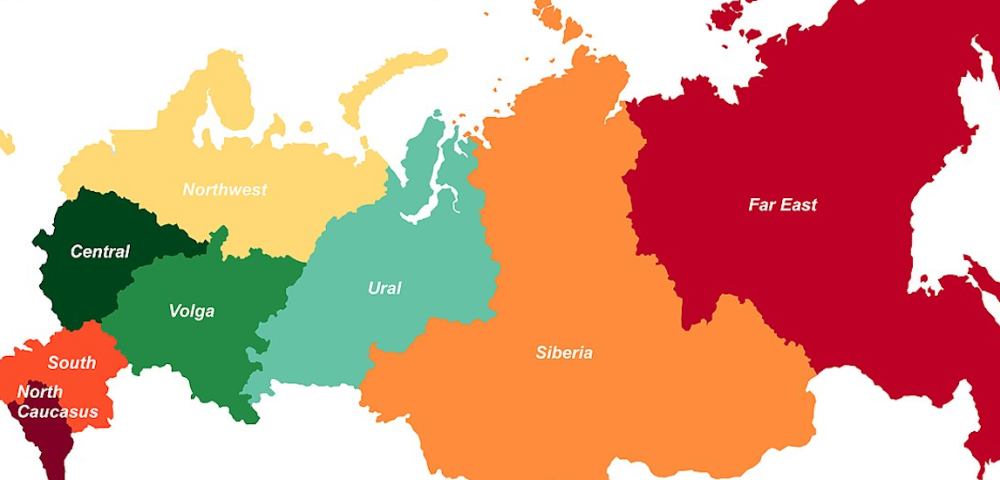
Follow Jim Luce on Facebook, Instagram, LinkedIn, TikTok, and X (Twitter).
© 2024 The Stewardship Report on Connecting Goodness – Towards Global Citizenship is published by The James Jay Dudley Luce Foundation Supporting & Educating Young Global Leaders is affiliated with Orphans International Worldwide, Raising Global Citizens. If supporting youth is important to you, subscribe to J. Luce Foundation updates here.
ABOUT Addiction Advice Africa Africa – South Africa – West Americas & Caribbean Analysis Animals & Animal Rights Anthropology Architecture Asia – East Asia-Pacific Asia – South Asia – Southeast Authoritarianism Available Content Biography Calendar Celebrity Children Childrens' Literature China (PRC) Cities & Urban Development Corporations Cuisine & Culinary Arts CULTURE Dance Disaster & Development Economics Education Europe Events Extremism Eyewitness Faith, Religion & Theology Family & Relationships Fashion Film & TV Global Warming Goodness Gun Control Health & Hygiene Heros of Democracy History Human Rights Humor Immigration & Migration In Depth International Relations Jim Luce Writes Law & Judicial System Leadership Liberation Movements Media Mental Health Mideast Monthly Feature Museums & Galleries Music Nature News Obituary Older Adults Open Orphans International Outer Space Pacific Islands Peace & Conflict Resolution Philanthropy Philosophy Philosophy Photography Poetry & Fiction Politics Pop Culture Poverty Press Pulse Profiles Racisim & Black Lives Matter Review Royalty Science & Technology Service Organizations Sexuality & Gender Social Media Sports & Olympics The Arts Theater & Comedy Travel U.N. U.S. Video Viewpoint War, Conflict & Terrorism Women WORLD World War II World War III Youth
New York, N.Y. We are drawn to the life of King Edward VII of England, a figure who, while not born to rule, embraced his destiny with both grace and a dash of rebellious spirit. From the moment he ascended the throne, Edward VII became a symbol of a changing world, ushering in a new era of modernity and international diplomacy.
We see Edward’s life as a tapestry woven from the threads of tradition and innovation. He was, after all, a man of his time, born into the rigid world of Victorian England. His upbringing was steeped in protocol and duty, but beneath the surface, he harbored a thirst for adventure and a keen understanding of the shifting currents of global power.
We imagine him chafing under the constraints of his upbringing, yearning for a life beyond the confines of royal protocol. Yet, he never shirked his responsibility, even as he embraced his own passions. He was a devoted son, a loving husband, and a loyal friend.
But it was his reign that truly cemented his legacy. Edward VII ascended the throne at a time of immense change, following the long reign of his mother, Queen Victoria. He inherited a world on the cusp of transformation, one characterized by technological advancements, burgeoning industrialization, and the rise of new empires.
We envision Edward VII as a leader who understood the need for modernization. He embraced new technologies, encouraged innovation, and championed international cooperation. His reign saw the establishment of the Entente Cordiale, a diplomatic agreement between France and Britain that paved the way for future alliances.
Edward VII was a man of style and sophistication. He transformed the court into a center of artistic and cultural expression, fostering a vibrant atmosphere of creative exchange. His influence extended beyond the realm of fashion and into the hearts and minds of his subjects. He understood the power of public image and the importance of connecting with his people on a personal level.
We recognize Edward VII as a figure who understood the importance of diplomacy and international relations. His travels across Europe and beyond forged bonds with other world leaders, laying the groundwork for a more interconnected world. He was a master of navigating the complexities of international politics, using his charisma and understanding of power to foster stability and cooperation.
Edward VII’s legacy is one of modernity, diplomacy, and a profound understanding of the world’s changing landscape. He was a man who navigated the complexities of his time with grace, intelligence, and a deep sense of duty. We find him an inspiring figure, a leader who embraced the challenges of his era and left an enduring mark on history.
TAGS: British Monarchy, Global Citizens, History, Diplomacy, Modernity, International Relations, Entente Cordiale
King Edward the VII of England, Son of Victoria (July 17, 2014)
xxx
New York, N.Y. xxx
The author Henry James as painted by John Singer Sargent in 1913. Credit: John Singer Sargent, National Portrait Gallery, London.
His dates are 1843-1916, which puts his productive life mainly in the Victorian Era, though his Late Period was more properly Edwardian. Second, he lived much of his adult life in England, and became a British citizen shortly before he died
[draft]
Henry James: Deeply Gifted and Closeted in Victorian London (July 17, 2014)
Portrait of Alexandre Dumas, 1855. The Manfred Heiting Collection, The Museum of Fine Arts, Houston. https://www.mfah.org/art/detail/57974.
[draft]
New York, N.Y. As we reflect on the literary giants who have shaped our understanding of courage, friendship, and adventure, Alexandre Dumas stands out as a towering figure. His timeless work, The Three Musketeers, continues to captivate readers with its thrilling narrative and profound themes. Hearing his story and experiencing his masterpiece have been incredible experiences that resonate deeply with us, underscoring his importance as a thought leader and global citizen.
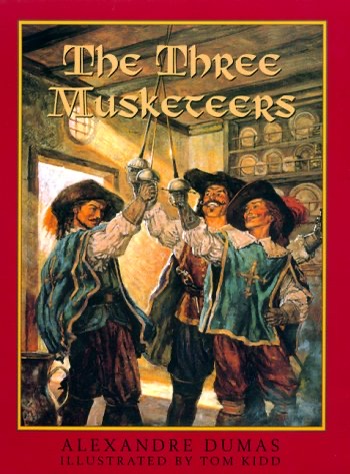
Dumas’s life and works are a testament to the power of storytelling to transcend time and space. Born on July 24, 1802, in France, Alexandre Dumas overcame significant personal and societal challenges to become one of the most celebrated authors in history. His mixed-race heritage and the discrimination he faced did not deter him but rather fueled his determination to succeed. His resilience and talent allowed him to rise above adversity, setting an inspiring example for us all.
The Three Musketeers, published in 1844, remains one of Dumas’s most beloved works. The novel’s themes of bravery, loyalty, and camaraderie resonate as strongly today as they did over a century ago.
Through the adventures of Athos, Porthos, Aramis, and the young D’Artagnan, Dumas explores the complexities of human nature and the enduring power of friendship. These characters, with their distinct personalities and unwavering dedication to one another, remind us of the strength found in unity and the importance of standing together in the face of adversity.
One of the most remarkable aspects of The Three Musketeers is its ability to transport readers into a world of historical intrigue and swashbuckling adventure. Dumas’s meticulous attention to detail and his vivid descriptions bring 17th-century France to life, immersing us in the political and social dynamics of the time. His skillful blend of historical fact and fiction not only entertains but also educates, providing us with a richer understanding of history and the human condition.
As a thought leader, he championed the values of equality, justice, and human dignity. His work reflects a deep commitment to social progress and the belief that literature can be a powerful tool for change. By creating characters who embody these ideals, Dumas inspires us to strive for a better world, one where courage and integrity prevail.
We are particularly moved by Dumas’s dedication to highlighting the strength and agency of his characters, especially in a time when societal norms often limited such portrayals. His female characters, like Milady de Winter and Constance Bonacieux, are complex and multifaceted, challenging the stereotypes of their time. Through their stories, Dumas underscores the importance of recognizing and valuing the contributions of all individuals, regardless of gender.
Dumas’s legacy as a global citizen is further cemented by the enduring popularity of his works around the world. Translated into countless languages and adapted into numerous films, television series, and stage productions, The Three Musketeers continues to inspire new generations. This global reach speaks to the universal appeal of Dumas’s themes and his ability to connect with readers across cultures and time periods.
As we celebrate the life and contributions of Alexandre Dumas, we are reminded of the transformative power of literature. His stories challenge us to think critically, to empathize with others, and to act with courage and integrity. Dumas’s works are a call to action, urging us to uphold the values of friendship, loyalty, and justice in our own lives.
The influence of Alexandre Dumas and his Three Musketeers is a testament to the enduring power of storytelling. His ability to craft compelling narratives that resonate across generations is a gift to us all. As we strive to be thought leaders and global citizens, we draw inspiration from Dumas’s unwavering commitment to excellence, his resilience in the face of adversity, and his belief in the power of unity and courage.
Dumas and His ‘Three Musketeers:’ Legacy of Courage and Adventure (July 17, 2014)
TAGS: Alexandre Dumas, The Three Musketeers, literary giant, thought leader, global citizen, historical fiction, courage, unity, friendship, classic literature, timeless adventure, resilience
[draft]
President Donald Trump meets with former National Security Advisor and Secretary of State Henry Kissinger, Wednesday, May 10, 2017, in the Oval Office of the White House in Washington, D.C. (Official White House Photo by Shealah Craighead)
The White House from Washington, DC
[draft] – expand
When Latin American liberation theology was developing, the United States took part in the so-called Cold War. One of the common misconceptions about the Cold War is that it was bloodless. The reality is, it was a brutal struggle, especially for Latin America. For example, the CIA actively supported anti-communist death squads in the region through the now declassified Operation Condor, killing an estimated 60,000 civilians simply because of their left-leaning politics. And that is just one such operation by the CIA among several dozen.
The sad reality is that most Americans are entirely unaware of the violent, repressive terrorist activities of the United States in Latin America during the Cold War. The war was in no way “cold” for the poor and underdeveloped Global South. The brutality was immense, with the United States as the primary instigator of terror.
I have been reading about the history of the Cold War, which in and of itself is not the subject of this post. Instead, I wanted to bring before you a forgotten piece of history regarding the CIA’s conspiracy to “crush” liberation theology. I learned of this story (in a passage quoted below) from Vijay Prashad’s excellent book, Washington Bullets. As a primer in US foreign affairs post-WWII, it is a book I highly recommend every American read. We are often too ignorant of our country’s history.
Liberation theology was perceived as a threat to US dominance in the region by leaders in the CIA and even the White House. This was because the core tenant of liberation theology is God’s preferential option for the poor. Thus, the Gospel is not neutral in the struggle for economic justice. God is on the side of the poor and oppressed. For the US government, by siding with the interests of the poor and oppressed, the proponents of liberation theology stood against the interests of the empire. And that was deemed unacceptable. Thus, the conspiracy to crush liberation theology began.
I will quote for you the whole passage of this forgotten history. My interest in liberation theology has been well-documented both on this website and in my books (especially James Cone in Plain English). But in all my studies of liberation theology, I had no idea that the United States government was actively plotting against its proponents. But it is an important revelation to discover that this so-called Christian nation repressively acted directly against one of the most important theological developments of the twentieth and twenty-first centuries.
Prashad tells the full story:
On 5 March 1971, Nixon assembled his closest advisors to the Oval Office. They were talking about Latin America. Nixon pointed out that the single most important event in the past ten years was the ‘deterioration of the attitude of the Catholic Church.’ ‘[T]hey’re about one-third Marxist, and the other third are in the center, and the other third are Catholics… in the old days,’ he said, ‘you could count on the Catholic Church for many things to play an effective role.’ Not anymore, not after the Second Vatican Council of 1962 and the emergence of liberation theology. Several key Catholic priests had come to the understanding that Jesus was a revolutionary, and so they should stand with the peasants and workers against the oligarchs and the armies. Since the Church had provided the ideological and cultural scaffolding to prevent the growth of radical ideas, the drift of some priests towards the left raised serious concerns not only amongst the oligarchies and the militaries, but also in the Vatican’s upper echelon and in the United States government.
In 1975, not long after Nixon’s ruminations about Catholicism, Bolivia’s Hugo Banzer, with advice from his Nazi security chief Klaus Barbie, urged his Interior Ministry to draw up a plan against liberation theology. […] In 1975, the Ministry was run by Juan Pereda Asbún, who would follow Banzer onto the dictator’s chair. Pereda worked closely with the CIA to draw up what would be known as the ‘Banzer Plan,’ which was a direct attack on liberation theology. Bolivian intelligence, joined by the CIA and by the intelligence services of ten other Latin American countries, began to compile dossiers on liberation theologists, to plant Communist literature in the churches to shut down any progressive Church publication, and to arrest and expel foreign priests and nuns who believed in liberation theology. On 16 July 1975, the Bolivian intelligence services arrested three Spanish nuns in the town of Oruro, accused them of conspiring with labour unions to hold a strike, and then deported them. Such arrests in deportations became commonplace; the Vatican did nothing to defend its priests and nuns. The CIA financed fascistic religious groups that would then bomb churches and assault priests and nuns affiliated with liberation theology.
The violence would escalate to murder. In El Salvador, where priests and nuns took up residence in the slums, the fascistic religious paramilitaries circulated a simple call—haz patria, mata un cura (‘be a patriot, kill a priest’). Rutilio Grande, a Jesuit priest, was murdered by the Salvadoran security forces in 1977 in a spate of murders which would culminate in the killing by a far-right death quad of the Archbishop of San Salvador Oscar Romero in March 1980. In December of 1980, four nuns from the United States were abducted, raped, and murdered by members of El Salvador’s National Guard. It would not end there. In 1989, six Jesuit priests, their housekeeper, and her daughter were brutally killed by a Salvadoran army battalion that had been trained by the United States. Cardinal Alfonso López Trujillo, as general secretary of the Latin American Episcopal Conference, would leave his church and go into the forests of Colombia with the paramilitaries; he was known to point out radical priests and nuns, who would be executed. López Trujillo would later head the Vatican’s campaign against homosexuality. In 1979, he organized a conference of Latin American Bishops, where Pope John Paul II said that the ‘idea of Christ as a political figure, a revolutionary, as the subversive of Nazareth, does not tally with the Church’s catechesis.’
Within a decade, Nixon’s worries about liberation theology morphed into two documents prepared for Ronald Reagan’s administration […] The main point was that the United States must protect ‘the independent nations of Latin America from communist conquest’ and ‘preserve the Hispanic American culture from sterilized communist conquest.’ The first document said that priests affiliated with liberation theology ‘use the church as a political arm against private property and productive capitalism.’ The next document noted that the US government must make closer ties with the Catholic hierarchy to crush liberation theology. In 1983, Pope John Paul II went to Nicaragua, in the throes of its revolution, to attach priests and the flock for their attraction to liberation theology.
Not only had the Vatican been seized by the threat from liberation theology, but Catholics seemed to drift off towards evangelical churches—many of them financed by US evangelical projects, such as Pat Robertson’s Christian Broadcasting Network. […] Protestant sects, particularly those with US roots, preached the Gospel of individual enterprise not social justice. That is why Ríos Montt left the Catholics and joined the Gospel Outreach Church of Eureka (California). When Ríos Montt came to power in a military coup in 1982, Pat Robertson dashed down to Guatemala City to interview him for The 700 Club; Robertson portrayed Ríos Montt to his more than three million viewers as having ‘a deep faith in Jesus Christ.’ This is Ríos Montt, who not only let loose his army to conduct a genocide of his own people, but who said, ‘[I]f you are with us, we’ll feed you; if not, we’ll kill you.’ A decade before, the leaders of 32 Pentecostal churches in Chile welcomed Pinochet’s coup. They said that the overthrow of Allende ‘was God’s answer to the prayers of all the believers who recognized that Marxism was the expression of a satanic power of darkness. We, the evangelicals, recognize as the higher authority of our country the military junta who in answer to our prayers freed us from Marxism.’ 1
The evangelical alliance with fascism in Latin America, as told in the last paragraph, continues today with the rise of far-right evangelicalism in America. Those surprised by Trump and his unwavering support by evangelicals should consider how this phenomenon is more deeply rooted in evangelicalism itself. In other words, it is not a flaw that fascistic tendencies have arisen but because of something inherent to evangelicalism itself. American Evangelicalism has flirted with fascism from the beginning. As James Cone has shown in his powerful body of work, the complicity of the white church in racism in America is deeply rooted in our theology. Racism is a theological problem that must bear fruit in social justice and political change. Theology without praxis is an empty language game. The theology of evangelicalism has been proven bankrupt by its political praxis, not only in its recent alliance with Trumpism but with the above example in Latin America.
That is why I think liberation theology is one of the most important theological developments of recent memory. It rejects the fundamentally gnostic tendencies of evangelicalism—its apoliticism and escapism—and recaptures the Gospel as the message of liberation, good news to the poor, ie, as the message Christ proclaimed (Luke 4). What good is our Gospel if it is concerned only with the ethereal soul without caring for the material and bodily needs of actual human beings? It is opium and a delusion. Thy Kingdom come, thy will be done, on earth as it is in heaven. That is our prayer. Not that we might escape the earth one day in an escapist flight to heaven, but that we might change the earth to look like heaven. Thus, a Gospel that does not make its way to earth, with all its material and human concerns, is not the Gospel Christ proclaimed.
The story recounted here offers a helpful contextualization of liberation theology and its importance. It gives me a new perspective as I read liberation theology. I hope it does the same for you.
[draft]
Salvador Guillermo Allende Gossens (1908-73, age 65). A Chilean socialist politician who began his career as a was a physician and then moved into politics. He served as the 28th president of Chile from 1970 until his death in 1973. As a democratic socialist committed to democracy, he was the first Marxist to be elected president in a liberal democracy in Latin America.
Allende’s involvement in Chilean politics spanned a period of nearly forty years, during which he held various positions including senator, deputy, and cabinet minister. As a life-long committed member of the Socialist Party of Chile, he unsuccessfully ran for the national presidency three times before winning in a close three-way race.

In office, Allende pursued a policy he called the “Chilean Way to Socialism.” Allende said that he was committed to democracy and represented the more moderate faction of the Socialist Party, while the radical wing sought a more aggressive course.
As president, Allende sought to nationalize major industries, expand education, and improve the living standards of the working class. He clashed with the right-wing parties that controlled Congress and with the judiciary.
On 11 September 1973, the military moved to oust Allende in a coup d’état supported by the CIA, which initially denied the allegations. In 2000, the CIA admitted its role in the 1970 kidnapping of General René Schneider who had refused to use the army to stop Allende’s inauguration.
Declassified documents released in 2023 showed that U.S. president Richard Nixon, his national security advisor Henry Kissinger, and the U.S. government, which had branded Allende as a ‘dangerous Communist,’ were aware of the military’s plans to overthrow Allende’s democratically elected government in the days before the coup.
As troops surrounded La Moneda Palace, Allende gave his last speech vowing not to resign. Later that day, Allende died by suicide in his office; the exact circumstances of his death are still disputed although he probably shot himself with a gun gifted by Fidel Castro.
Allende had said he wouldn’t be taken alive even as Pinochet ordered an all-out attack on La Moneda. The palace was bombed by fighter jets and the air thick with tear gas and smoke as the building went up in flames. Allende had ordered his allies to surrender, but he stayed behind at the last minute.
Chilean director Patricio Guzmá’s film, his magnum opus, the 270-minute “Battle of Chile,” documenting the collapse of democracy and death of Allende at the hands of Pinochet was produced in 1973-1979, and released to wide critical acclaim.
Following Allende’s death, General Augusto Pinochet refused to return authority to a civilian government, and Chile was later ruled by the Government Junta, ending more than four decades of uninterrupted democratic governance, a period known as the Presidential Republic.
The military junta that took over dissolved Congress, suspended the Constitution of 1925, and initiated a program of persecuting alleged dissidents, in which over 3,000 civilians disappeared or were killed. Pinochet’s military dictatorship only ended after the successful internationally backed 1989 Constitutional Referendum led to the peaceful Chilean transition to democracy.
[draft]
New York, N.Y. As we navigate the complexities of our modern world, one of the most pressing issues we face is religious intolerance. This persistent challenge undermines our collective efforts to build inclusive and harmonious societies. From our perspective as thought leaders and global citizens, addressing religious intolerance is not just a moral imperative but a critical step toward ensuring peace and mutual respect among diverse communities.
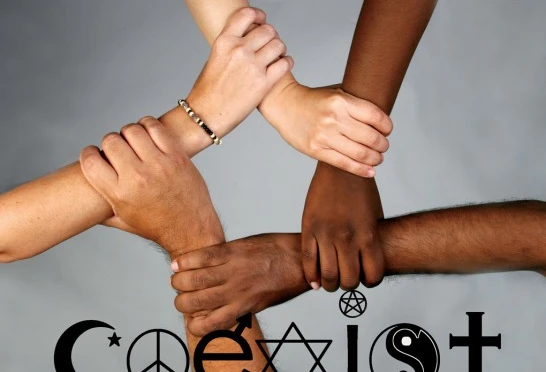
Religious intolerance manifests in various forms, ranging from subtle discrimination and social exclusion to violent extremism and persecution. It is fueled by ignorance, fear, and misinformation, which can easily spread and take root in societies lacking strong educational and cultural frameworks that promote understanding and respect. We have witnessed the devastating impacts of religious intolerance firsthand, observing how it tears apart communities, disrupts lives, and hinders progress.
In many parts of the world, people grow up with limited exposure to beliefs and practices different from their own. This isolation breeds suspicion and hostility, making it easier for prejudices to flourish.
Sensationalist reporting and negative stereotypes can reinforce biases and deepen divisions. Responsible journalism should strive to provide balanced and accurate portrayals of religious communities, highlighting their contributions to society and their struggles against discrimination. By amplifying positive stories and promoting interfaith dialogue, the media can help bridge gaps and foster a more inclusive worldview.
We have participated in numerous interfaith initiatives that bring together individuals from different religious backgrounds to share their stories and perspectives. These encounters are profoundly transformative, breaking down barriers and building lasting relationships based on respect and empathy. Such initiatives should be supported and expanded, creating more opportunities for people to connect on a human level and recognize their shared humanity.
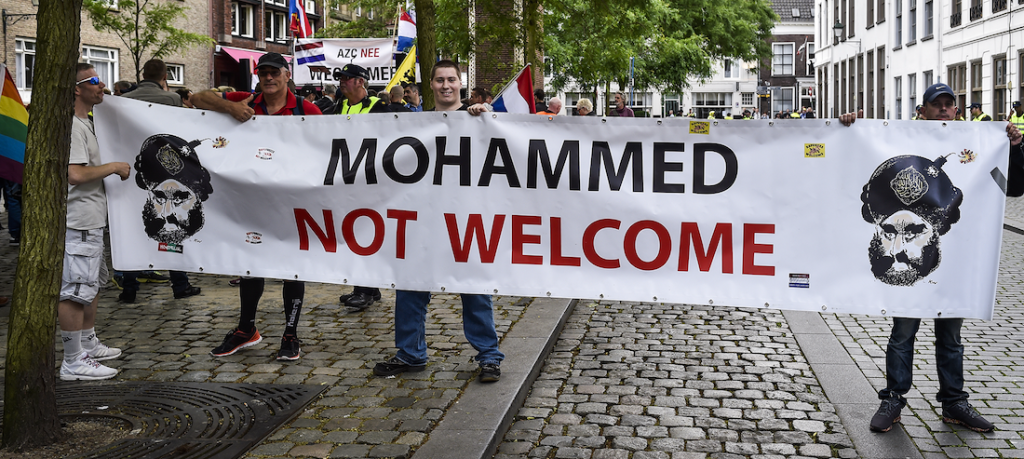
Governments must ensure that laws and policies protect the rights of all religious groups and promote equality. This includes combating hate speech, ensuring freedom of worship, and providing platforms for minority voices to be heard. At the same time, religious leaders must take responsibility for promoting peace and tolerance within their communities. They have a unique influence that can be harnessed to challenge extremist narratives and advocate for inclusive values.
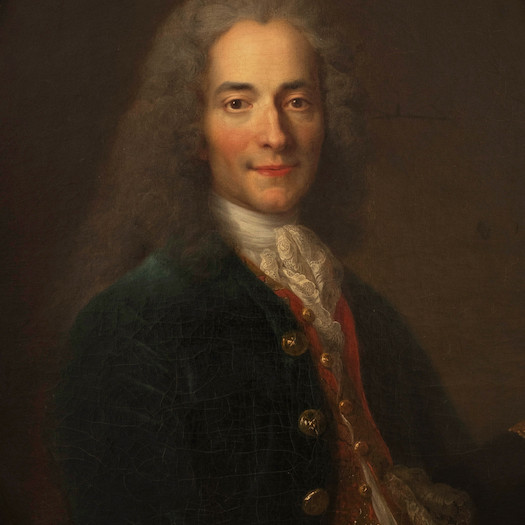
In our globalized world, where the movements of people and ideas are more fluid than ever, religious intolerance is not confined to any single region or culture. It is a global challenge that requires a coordinated and sustained effort from all sectors of society. International organizations and coalitions must work together to address the root causes of intolerance and support initiatives that foster interfaith understanding and cooperation.
While they can be used to spread hate and division, social media platforms also offer powerful tools for promoting tolerance and unity. We have seen inspiring examples of online campaigns that celebrate religious diversity and challenge discriminatory narratives. By harnessing the positive potential of these platforms, we can reach a wider audience and create a global movement against religious intolerance.
As we reflect on the importance of combating religious intolerance, we are reminded of the profound impact it has on individuals and communities worldwide. It is our collective responsibility to stand against prejudice and discrimination, to educate ourselves and others, and to promote a culture of respect and understanding. By doing so, we honor the values of compassion, justice, and equality that are at the heart of all major religious traditions.
The fight against religious intolerance is far from over, but it is a battle worth waging. Through education, dialogue, and collective action, we can create a world where all individuals are free to practice their faith without fear of persecution. Let us commit to this vision and work tirelessly to make it a reality for future generations.
Combating Religious Intolerance: Education, Dialogue, and Action (July 16, 2014)
TAGS: Religious intolerance, interfaith dialogue, global citizenship, peace and justice, religious freedom, tolerance, education, cultural diversity, mutual respect, combating prejudice
New York, N.Y. As we reflect on the figures who have shaped modern history, it is imperative to critically examine the actions and legacies of those in positions of power. Henry Kissinger, who served as National Security Advisor and Secretary of State under Presidents Nixon and Ford, is one such figure whose policies and decisions have left an indelible mark on the world. From our perspective, Kissinger’s tenure is marred by a series of controversial actions and atrocities for which he has been held responsible, raising serious ethical and moral questions about his legacy.

Kissinger’s approach to foreign policy was characterized by a realpolitik philosophy, prioritizing national interests and power balances over ethical considerations. This pragmatic but ruthless strategy often led to devastating consequences for countless lives around the globe. One of the most egregious examples of this is the secret bombing campaign in Cambodia, which began in 1969 under Kissinger’s direction. This operation, which targeted North Vietnamese supply routes, resulted in the deaths of an estimated 100,000 Cambodian civilians and destabilized the region, ultimately leading to the rise of the Khmer Rouge and their genocidal regime. The suffering and loss caused by these bombings are a stark reminder of the human cost of Kissinger’s policies.
Another major controversy surrounding Kissinger is his involvement in the Chilean coup of 1973. Kissinger supported the overthrow of democratically elected President Salvador Allende and the subsequent installation of the brutal dictator Augusto Pinochet. Under Pinochet’s regime, thousands of Chileans were tortured, murdered, and disappeared.
Kissinger’s role in this coup and his subsequent defense of Pinochet’s regime reflect a willingness to support authoritarianism and human rights abuses in the name of geopolitical strategy. This raises serious ethical questions about the lengths to which Kissinger was willing to go to achieve his objectives.
Kissinger’s policies in Southeast Asia also extended to East Timor, where his actions further highlighted a disregard for human rights. In 1975, Indonesia invaded East Timor shortly after its declaration of independence from Portugal. This invasion, which resulted in the deaths of approximately 200,000 Timorese, was tacitly approved by Kissinger and President Gerald Ford during a meeting with Indonesian President Suharto. Kissinger’s support for the invasion, despite clear evidence of impending atrocities, underscores his willingness to condone severe human rights violations for strategic gains.

The legacy of Kissinger’s tenure is also stained by his involvement in Operation Condor, a campaign of political repression and state terror carried out by right-wing dictatorships in South America. Through this operation, coordinated efforts to kidnap, torture, and murder political dissidents were implemented with the tacit approval and support of the U.S. Kissinger’s endorsement of these actions, aimed at suppressing leftist movements, resulted in widespread human rights abuses and the suffering of countless individuals.
In addition to these specific instances, Kissinger’s broader foreign policy strategies often involved supporting repressive regimes and turning a blind eye to their atrocities. His backing of Pakistan during the Bangladesh Liberation War in 1971 is a prime example. Despite reports of widespread atrocities committed by the Pakistani military against Bengalis, including mass killings and rapes, Kissinger continued to support Pakistan as a strategic ally. This decision further illustrates his prioritization of geopolitical interests over humanitarian considerations.
Kissinger’s defenders often argue that his actions were necessary to maintain global stability during the Cold War. However, this justification ignores the profound and lasting human suffering caused by his policies. Stability achieved at the cost of widespread atrocities and human rights abuses is a deeply flawed and ethically troubling concept.
As thought leaders and global citizens, it is our responsibility to critically examine the actions of those who have shaped our world. Henry Kissinger’s legacy is a complex and contentious one, marked by significant achievements in diplomacy and international relations but also by grave moral and ethical failings. The atrocities and human suffering resulting from his policies cannot be overlooked or excused.
Reflecting on Kissinger’s career, we are reminded of the importance of holding leaders accountable for their actions. The pursuit of national interests must be balanced with a commitment to human rights and ethical principles. As we strive to create a more just and compassionate world, we must learn from the mistakes of the past and ensure that the voices of the oppressed and the victims of atrocities are heard and remembered.
#HenryKissinger #ForeignPolicy #HumanRights #WarCrimes #Realpolitik #ControversialLegacy #CambodiaBombing #ChileCoup #EastTimor #OperationCondor
TAGS: Henry Kissinger, foreign policy, human rights, war crimes, realpolitik, Cambodia bombing, Chile coup, East Timor, Operation Condor, controversial legacy, ethical considerations
Manufacturing of Condoms

Asia:

America and Europe:
Asia:
America and Europe:
Physical Differences:
Cultural Differences:
Overall, while the core product remains the same, the manufacturing, marketing, and cultural reception of condoms differ significantly between Asia and the Western world, shaped by local materials, regulatory environments, cultural attitudes, and public health priorities.
Condoms and Culture in Asia (July 16, 2014)
New York, N.Y. As we reflect on the life and legacy of Aaron Copland, we find ourselves in awe of a man whose music not only shaped American culture but also resonated globally. Born on November 14, 1900, Aaron Copland emerged as a pioneering force in the world of classical music, earning his place as a thought leader and global citizen through his innovative compositions and dedication to education.
Growing up in an Orthodox Jewish family in Brooklyn, New York, Copland was surrounded by a rich tapestry of cultural influences. His early exposure to music came from his mother, who played piano, and his older sister, who took lessons. This familial environment nurtured his burgeoning interest in music, and by the age of 15, he had decided to become a composer. Copland’s early education in music included studying under the tutelage of Rubin Goldmark, a prominent New York composer and teacher.
Aaron Copland’s journey took a significant turn when he traveled to Paris in the 1920s to study with the legendary Nadia Boulanger. This period was transformative for Copland, exposing him to the avant-garde and the broader European musical landscape. Under Boulanger’s mentorship, Copland developed a unique compositional voice that would later define American classical music.
Returning to the United States, Copland began to weave elements of jazz, folk, and American themes into his compositions. Works such as “Appalachian Spring,” “Rodeo,” and “Billy the Kid” became emblematic of his style, capturing the spirit of America in sound. His ability to blend classical forms with American folk traditions created a new, distinctly American voice in classical music.
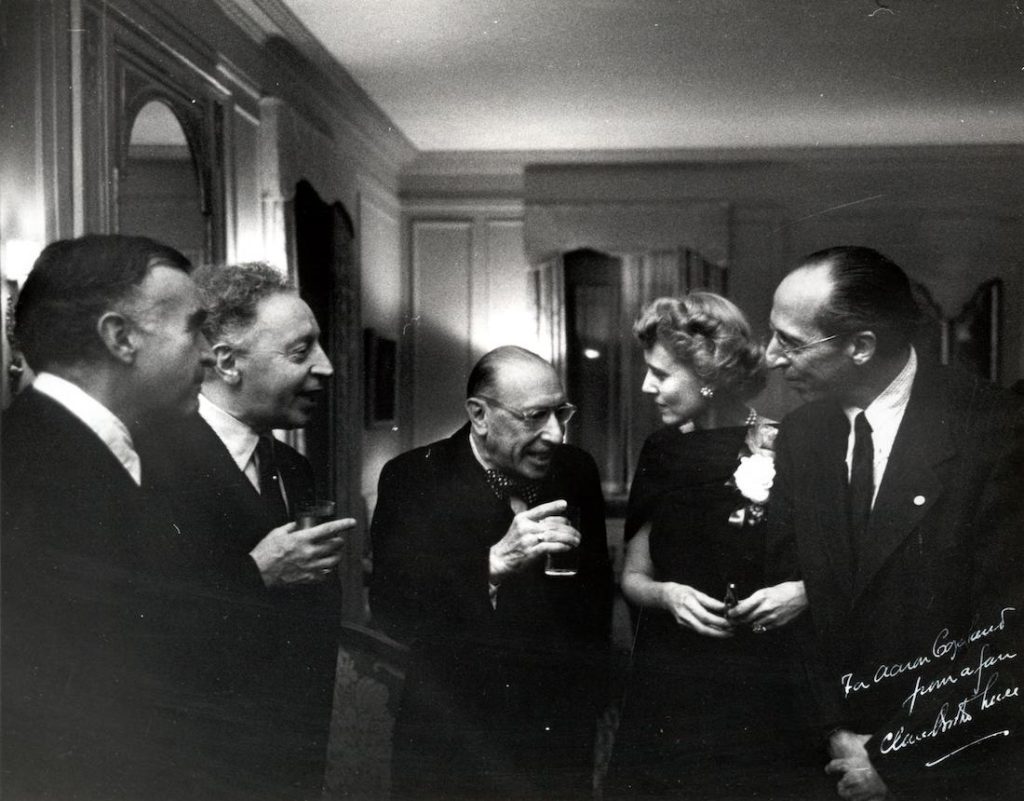
Copland’s contributions went beyond composition; he was a tireless advocate for the arts in America. Through his involvement with organizations like the American Composers Alliance and the League of Composers, he championed the works of his contemporaries and supported the growth of American music. His influence extended into the realm of education, where he played a pivotal role in nurturing the next generation of musicians and composers.
One of Copland’s most significant contributions was his ability to make classical music accessible to broader audiences. His “Fanfare for the Common Man,” inspired by a speech from Vice President Henry A. Wallace, became an anthem of hope and resilience during World War II. This piece, like many others, showcased Copland’s talent for creating music that was both profound and approachable, resonating with listeners across different backgrounds.
Aaron Copland’s impact was not confined to the United States; his music found an international audience, and his role as a cultural ambassador helped bridge gaps between nations. He frequently traveled abroad, sharing his knowledge and compositions, and fostering cultural exchange. His global influence was recognized with numerous awards, including the Presidential Medal of Freedom in 1964.
As thought leaders and global citizens, we recognize Copland’s legacy in fostering a greater appreciation for cultural diversity through music. His works continue to be performed worldwide, inspiring new generations of musicians and listeners. His commitment to artistic excellence and cultural dialogue exemplifies the power of the arts to unite and uplift.
In celebrating Aaron Copland’s life, we are reminded of the importance of innovation, education, and cultural exchange. His music serves as a testament to the rich tapestry of American culture and the potential for the arts to influence and inspire globally. As we listen to his compositions, we are transported through time and space, experiencing the universal themes of hope, struggle, and triumph that define the human experience.
Copland’s dedication to his craft and his efforts to make music accessible to all continue to inspire us. His work as an educator and advocate for the arts remains a guiding light for those who seek to enrich their communities through culture and creativity.
Aaron Copland: The Maestro Who Harmonized America (July 15, 2014)
New York, N.Y. In high school, I visited Berlin and traveled through Check Point Charlie to visit the eastern side of the Wall.